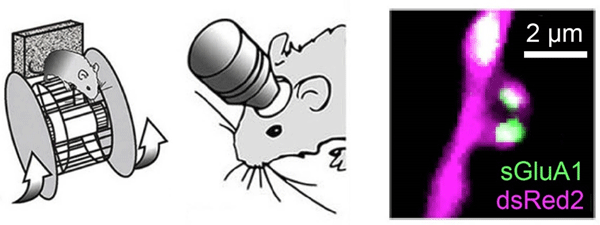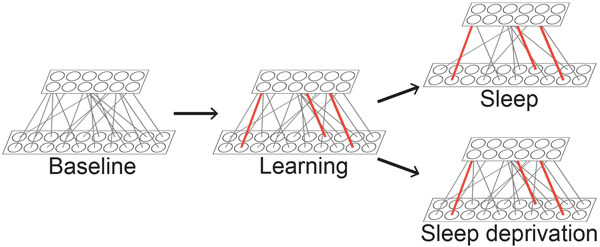Synaptic and molecular mechanisms of memory consolidation during sleep.
Miyamoto et al., Nature Communications, 2021
Daisuke Miyamoto (Research Center for Idling Brain Science, University of Toyama)
http://www.sugitani.u-toyama.ac.jp/rcibs/staff/miyamoto/miyamoto_en.html
Backgrounds: Sleep and memory
Sleep is involved in various cognitive functions, including memory consolidation. Previous studies have shown that neurons in memory-related brain areas are reactivated during sleep and are responsible for memory consolidation. In particular, we have revealed the time course of neural activity that plays an important role in memory consolidation by manipulating neural activity during sleep (Miyamoto et al., Science, 2016). While neural activity during sleep immediately after learning plays an important role in memory consolidation, memory becomes resistant to neural activity manipulation with the passage of time. On the other hand, neural activity reorganizes the molecular components of synapses, resulting in long-term plasticity of synaptic strength. Therefore, we hypothesized that neural activity during learning and sleep forms persistent memory traces through synaptic plasticity.
Results and Discussion: Synapse-selective AMPA receptor plasticity by learning and sleep
In living mice, we did imaging of membrane surface AMPA receptors (AMPARs) at dendritic spines of excitatory neurons in the primary motor cortex (Fig. 1). We visualized that the total spine AMPARs increased by motor learning and decreased by sleep. Focusing on some spines in which AMPARs were particularly increased by learning, the increase lasted on day 2 and was not affected whether mice slept or not after learning. On the other hand, AMPARs of other spines (spines whose AMPARs did not increase by learning) decreased during post-learning sleep. This post-learning decrease in AMPARs correlated with motor memory performance on day 2. Furthermore, post-learning sleep deprivation impaired the AMPARs decrease and motor memory performance on day 2. Therefore, we suggest that the AMPARs increase by learning and decrease by post-learning sleep cooperatively works for relative strengthening of the memory-related synaptic signal (Fig. 2).
 Fig. 1. In vivo imaging of AMPA receptors
Fig. 1. In vivo imaging of AMPA receptorsComplex wheel task was used for testing motor memory consolidation during sleep (Left). In vivo two-photon imaging (Middle) of spine surface GluA1, a subunit of AMPA receptors (Right).
 Fig. 2. Plasticity by learning and sleep in individual synapses.
Fig. 2. Plasticity by learning and sleep in individual synapses.Learning potentiated a subset of synapses, and it was protected regardless of post-learning animal states: sleep or sleep deprivation. Sleep depressed the other synapses, which was not potentiated by learning.
Original Article
Net decrease in spine-surface GluA1-containing AMPA receptors after post-learning sleep in the adult mouse cortex
Daisuke Miyamoto, William Marshall, Giulio Tononi, Chiara Cirelli
Journal: Nature Communications 12, 2881 (2021)
https://www.nature.com/articles/s41467-021-23156-2

